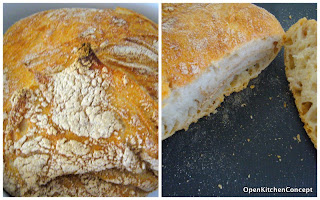Inside the Tore Tore Market at Shirahama, Wakayama
I like going to markets and supermarkets whenever I travel.
I think it is a good way to learn more about the locals - what they eat, buy and use. It is also a good time for me to do some shopping.
Markets in Japan are must-visit places. They are usually quite busy but still very clean. You can find all kinds of food on sale in the markets. And you also get to eat very good food in small restaurants and eateries around markets.
The Tsukiji market in Tokyo is world famous.. and most tourists know that they can go there for a unique shopping experience and the freshest seafood you can find in Tokyo... at a very reasonable price.
I have also been to a really nice market in Hokkaido where I had the freshest bowl of Uni rice (Fresh sea urchin on top of piping hot rice).
One of the highlights for our trip this time was a visit to the Tore Tore Market at Shirahama, Wakayama. It is not a sprawling market like Tsukiji.. but big enough for us to spend a couple of hours there... And we could have stayed longer!
We saw someone filleting an entire tuna, sorting the meat by grades and then selling it on the spot. The really premium pieces were those where the meat actually were nicely marbled like a good piece of Japanese wagyu beef. The sister-in-law quickly bought a piece of those and had the vendor sliced it up for us into pieces for our lunch.
There were also some rather fascinating seafood on sale at the market - Frozen Giant crabs from Hokkaido, whale meat cooked in all kinds of style, giant scallops and even puffer fish. We couldn't resist buying some whale sashimi and puffer fish sashimi for our nephew who was keen to try anything new.
Apart from fresh seafood, there were all kinds of cooked and pickled seafood on sale in the market. I was so tempted to buy a few bottles of pickled sea urchin mixed with squid (sounds strange but these are very good with rice) but the lady who sold them said they had to be frozen and wouldn't last our entire day of travelling around on the tour bus. But I ended up buying some rather special preserved scallops (preserved scallops with sweet plums) that were really yummy so I was pacified.
Then there is this section of the market where they sold lots of fruits, vegetables and Japanese okashi (Japanese snacks). Because the region is famous for their Ume (plum) and Mikan (a type of seedless mandarin orange), we bought some Umeboshi (梅干) and Mikan jelly home.
We ended up having lunch at the market and it was a real feast of all kinds of raw fish and seafood.
A huge plate of sashimi, more than enough for the 7 of us..
The scallops and sea urchin were very good.
Left: This excellent plate of raw tuna cost more than S$60 but was really good
Right (top): Whale sashimi - It's wrong to eat whale.. but we just had to try a little.. It tasted like raw beef
Right (bottom): Puffer fish sashimi - you could die if the chef made a mistake.. but I thought ours didn't taste that great
A great lunch at the market




















































